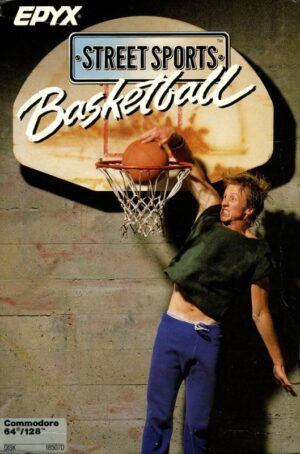Retro Replay Review
Gameplay
World Cup Carnival offers a basic but serviceable soccer experience that will feel familiar to fans of 8-bit football titles. You control your chosen national side on a simple pitch, passing, tackling, and shooting with just a handful of button inputs. The game’s pace is deliberately unhurried, leaving room for strategic buildup play rather than frantic arcade action.
(HEY YOU!! We hope you enjoy! We try not to run ads. So basically, this is a very expensive hobby running this site. Please consider joining us for updates, forums, and more. Network w/ us to make some cash or friends while retro gaming, and you can win some free retro games for posting. Okay, carry on 👍)
Under the hood, however, you’ll quickly notice that the core mechanics are lifted almost wholesale from Artic Computing’s earlier World Cup Football titles on the ZX Spectrum and Commodore 64. Movement can feel sluggish, and the collision detection occasionally results in players clipping through one another. Yet for all its rough edges, there’s a nostalgic charm to the way the ball bounces and the manner in which defenders jockey for position.
Despite the official FIFA license, there’s no real innovation in terms of match modes or advanced control schemes. You select your team, pick an opponent, and kickoff ensues. There are no tournament brackets beyond a single match setup, and no management or training modes to deepen the experience. In short, if you’re seeking rich gameplay variety, World Cup Carnival can feel sparse.
Still, for a quick exhibition match or a head-to-head showdown with a friend, the simplicity can work in its favor. The straightforward controls make it accessible to newcomers, while retro enthusiasts may appreciate mastering its idiosyncratic dribbling loops and timing-based shots. It’s a bare-bones package, but it delivers an honest, old-school kickabout.
Graphics
On systems like the ZX Spectrum and Commodore 64, World Cup Carnival’s visuals cling firmly to the limitations of mid-1980s home computers. Players are represented by blocky sprites with minimal animation frames, and the pitch is a flat green expanse devoid of crowd detail or sideline flair. Goal nets are rendered as simple grids, and teams are differentiated only by their uniform colors.
Compared to contemporaries, the game’s graphics feel decidedly dated—even for 1986. There’s little shading or texture, and high-profile licensed branding aside, the stadium backdrop remains static and lifeless. The Amstrad CPC version lifts the look slightly with a more varied color palette, but it still can’t mask the simplistic character designs.
That said, there’s a certain retro aesthetic that some players will find endearing. The chunky pixel art evokes memories of early home computing, and the minimal effects—like the ball kicking animation and basic crowd cheering flash—deliver a nostalgic kick. If you grew up on Spectrum or C64 footie classics, these visuals might rekindle fond memories faster than they raise modern standards.
Ultimately, World Cup Carnival is less about pushing graphical boundaries and more about celebrating the thrill of soccer on simple hardware. It doesn’t dazzle by today’s measures, but as a historical curiosity it stands as a testament to the era when pixel limits shaped every aspect of game design.
Story
As a soccer simulation, World Cup Carnival doesn’t offer a narrative-driven campaign or character arcs. The “story” here is as straightforward as it gets: choose your national team, step onto the pitch, and aim for the net. There’s no host commentary, no cutscenes, and no off-the-field drama to unfold.
However, the game’s real-life tie to the 1986 FIFA World Cup in Mexico lends it a unique historical footnote. It became the first soccer title to carry an official FIFA license, giving players the chance—albeit limited—to guide their favorite country under the prestigious banner of the world’s governing body for football.
That licensing element is the only discernible storyline: the world’s best teams converging for a global tournament. Yet the gameplay itself doesn’t reflect tournament progression or group stages; you’ll have to supply your own narrative stakes. Whether you’re reenacting a classic matchup or crafting your own soccer saga, the story lives in your mind rather than in the code.
In effect, the lack of an embedded storyline is both a limitation and an invitation. For some, the barebones setup will feel hollow. For others, it’s a canvas on which to project rivalries, underdog breakthroughs, and last-minute winning goals, all powered by imagination and a blinking 8-bit scoreboard.
Overall Experience
World Cup Carnival is ultimately a product of its time—and its genesis as a rebranded Artic Computing title shows in every clumsy collision and pixelated jersey. For modern gamers accustomed to deep simulations and cinematic presentation, it will likely feel antiquated and undercooked.
Yet for retro collectors and aficionados of early football games, it serves as an important milestone. The official FIFA license makes it a historical curiosity, and its straightforward pick-up-and-play design offers a quick nostalgia fix. There’s a certain joy in rediscovering the rudimentary controls and simplistic strategies that once felt cutting-edge.
Multiplayer head-to-head sessions remain the highlight, recalling an era when sharing a single joystick with a friend was the pinnacle of competitive fun. The imperfections—glitchy passes, sprite flicker, and all—become part of the charm when experienced with the right mindset.
In the end, World Cup Carnival is best approached as a retro artifact rather than a contender in today’s crowded sports genre. It won’t compete with modern soccer sims in depth or realism, but it stands as a snapshot of 1986 gaming culture and the dawn of officially licensed football video games. If you’re drawn to vintage sports titles or curious about the genre’s early forays into licensing, it’s worth a spin.
 Retro Replay Retro Replay gaming reviews, news, emulation, geek stuff and more!
Retro Replay Retro Replay gaming reviews, news, emulation, geek stuff and more!









Reviews
There are no reviews yet.